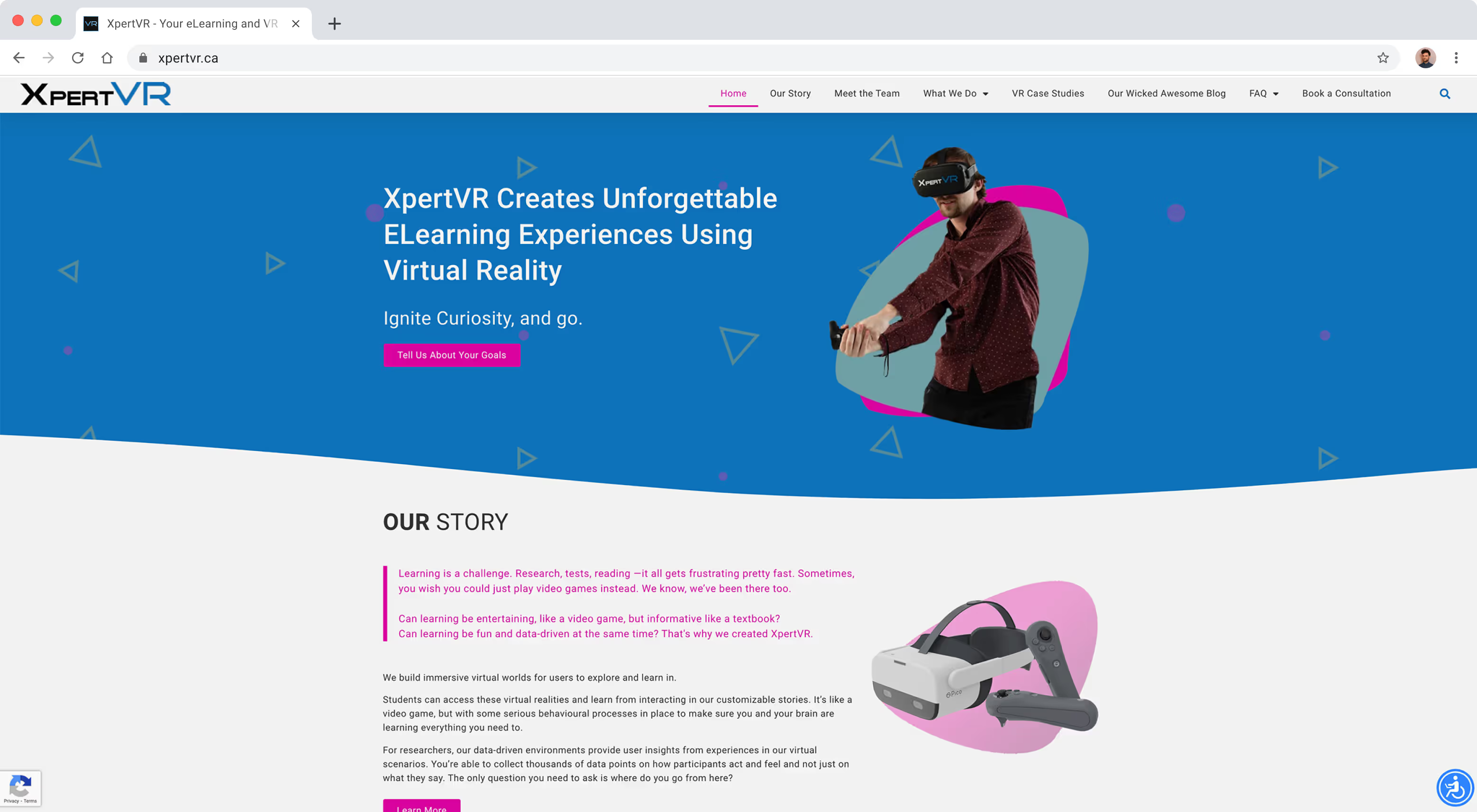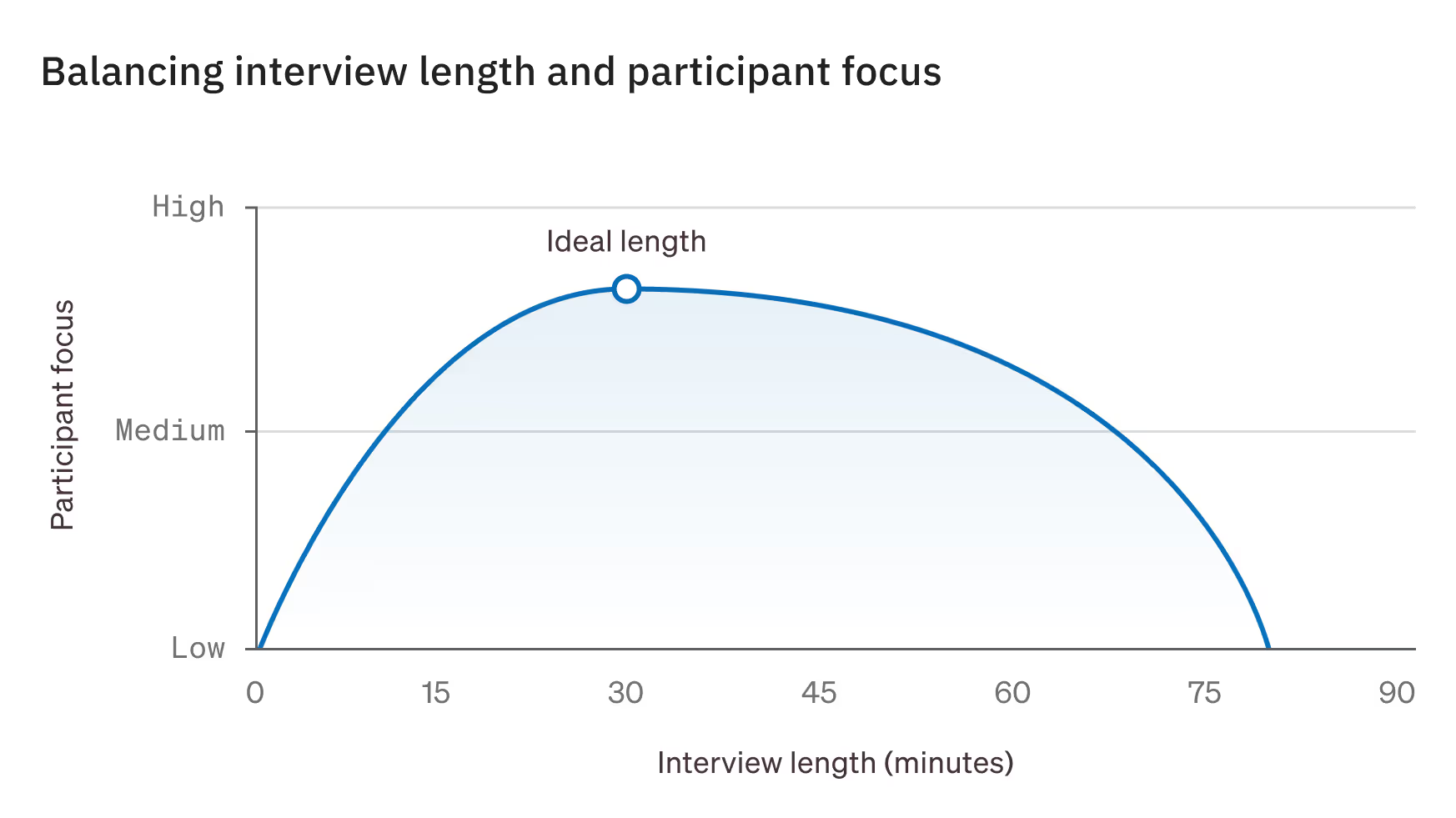
UX Researcher, Information Architect, UX Designer
1 Project Manager, 1 Web Developer
June–July 2021
When academic researchers landed on XpertVR’s website, they were intrigued, but unclear on what the company actually did. The site failed to communicate XpertVR’s value, especially to those unfamiliar with virtual reality or unsure how it applied to them.
I led a UX-focused redesign to clarify the value proposition, simplify the user journey, and build trust across XpertVR’s key researcher audience.
Results from the redesign:
To uncover how the site needed to evolve, I started with foundational studies focused on XpertVR’s core audiences in education and research. At the time, the team didn’t have a clear understanding of who these users were or how they evaluated VR services. I ran a short survey across campus VR research groups and educator communities to gather early signals, following up with targeted interviews.
Most participants were beginners, having only tried one or two educational VR experiences. They used VR simulations to study a wide range of disciplines: decision-making in simulated environments like stores, social psychology, and even criminology. They primarily discovered VR through product websites and social media, not through institutional channels.
From the 22 survey respondents, I selected six for deeper 1:1 interviews. There were two goals:
These sessions revealed early trust gaps in XpertVR’s experience, especially trying to understand what the company actually does.
Live remote interview with an academic researcher exploring initial impressions of the site.
After reviewing the interviews and usability testing of XpertVR's site, two critical issues stood out:
I mapped the typical journey of a researcher, highlighting the pain points at key steps, in order to plan the improved experience for lead acquisition.
With the customer journeys defined, I turned the research insights into a revised site architecture—one that better aligned with researchers’ mental models and built early trust. The scope expanded a bit here to include two other user types, trainers and participants, but these ended up fitting neatly into the IA changes for the site.
I focused on two key structural changes:
After validating the site structure, I created wireframes to bring the new architecture to life, focusing on three key pages: the homepage, Our Story, and a services subpage tailored to researchers. Each design aimed to build trust, clarify value, and guide researchers more confidently into XpertVR’s offerings.
The homepage was the most critical screen. It had to function as a high-level wayfinding tool for researchers and the other core user types, trainers and research participants, while also establishing credibility early.
Key design changes included:
At the time of writing this case study, the site was in the final stages of QA. You’ll be able to see the new XpertVR site here.
Results from the redesign, aggregated across all three user types—researchers, trainers, and VR participants:
These results were tracked through XpertVR’s internal analytics and CRM tools over the first few months post-launch, validating the redesign’s effectiveness with both researchers and stakeholders.
One of the biggest takeaways was how interview structure affects data quality. Participant focus peaked around the 30-minute mark, after which responses tended to taper in quality.
In the future, I’d keep the sessions shorter and more focused with breaks or follow-ups to maintain energy and attention.

Participant focus peaked around 30 minutes, reinforcing the decision to shorten interviews.